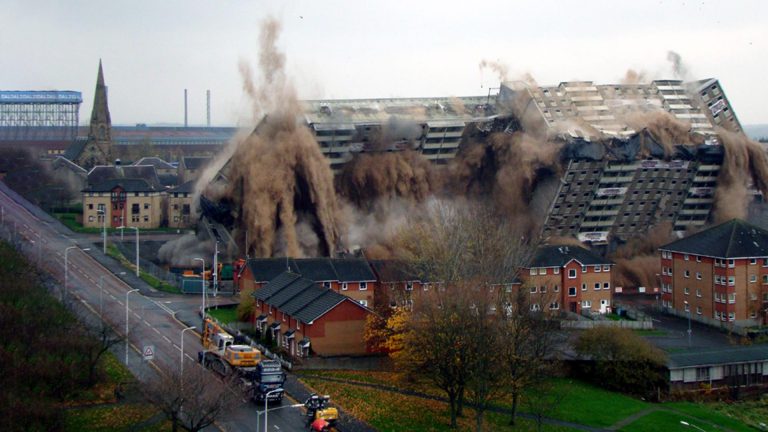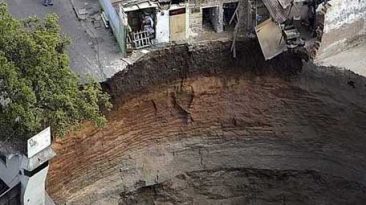They’ve warned us for years. The big one is coming. And without warning, it happens. You feel the ground moving. People are starting to panic. Yelling. Screaming. Pushing and shoving. Glass is flying everywhere. Then, the worst possible thing happens. The ceiling begins to collapse, and there’s nowhere to go.
In May 2013, a woman was rescued from the ruins of a factory building in Bangladesh, 17 days after it collapsed. And after the destructive Haiti earthquake of 2010, one man survived for 12 days under the rubble. So, what happens if you’re faced with the same fate?
What is the one thing that can save your life? How much time do you have? Where is the safest place to be?
Step 1: Have an Emergency Kit
This can be lifesaving and requires some apocalyptic pre-planning. In December 2005, 40-year-old Naqsha Bibi was trapped in rubble for over two months after an earthquake in Kashmir, Pakistan. So, ideally, prepare for an extreme scenario. Start with a first aid kit, 4 liters (1 gallon) of water, non-perishable food, and a flashlight. It’s good to have a radio for communication available in case your cell phone is lost during the crisis or doesn’t work.
Anyone surviving in rubble for longer than two weeks is incredibly rare. Although the probability of getting out alive decreases every day, be extra ready with anything that can increase your chances, like an emergency blanket, a safety whistle, a Swiss Army knife, work gloves, and a fire extinguisher.
Step 2: Remain Calm
Assess the situation and head toward the light. Okay, maybe not that light. If you’re on the ground floor, look for windows. And don’t use an elevator. Try to remember where the nearest stairwell is. You do need to get out of the building as soon as possible. However, taking the time to think is better than running around frantically looking for exits. Staying calm will help conserve your energy, which may be imperative if you have to dig your way out or if you get trapped somewhere.
Shouting and screaming can drain your energy and cause you to inhale more dust, debris, and lethal fumes. So try to keep relatively quiet, unless you know there are people close and searching for you. In Pasquale Buzzelli’s plight, his office was on the 64th floor of the World Trade Center’s North Tower in New York on September 11th, 2001. Even in this devastation as the tower collapsed around him, he was successfully rescued when nearby firefighters heard his calls for help.
Step 3: Stay on the Floor
If exits are blocked, stay on the floor and use heavy furniture for your protection. Especially shield your vulnerable head at all costs. If you can somehow angle a table or desk effectively and get under it, do so, since it will help deflect any falling debris. If you are trapped under rubble, moving too much can trigger more collapse. The main goal should be to attract rescue workers or dogs to your location, using a flashlight or your cell phone to signal for help. If you need to move, make your motions slow and steady.
Step 4: Be Careful of Fire
Even if you don’t think there is any fire present, put a wet cloth over your mouth and nose to prevent breathing smoke or toxic fumes. Check to see if door handles are warm before opening and stay alert for smoke before proceeding down hallways and stairwells. You don’t want to enter another area with additional perils.
Step 5: Move to the Outside Walls
If you’re trapped inside the building, the best place to be is near the outer walls. The farther inside you are, the greater probability of obstacles blocking your escape route. Also, don’t stay under any doorways. If the door jamb falls backward or forward due to shifting, you will be crushed by the ceiling.
When a building does collapse, the safest place to be is on the top floor, and the most dangerous is the ground level. Unfortunately, you won’t be able to choose your location in a situation like a sudden earthquake, but don’t worry, we’ve got you covered.
Sources
- “The Miracle Survivors“. 2003. New York Magazine.
- “How To Survive And Escape From A Collapsed Building | Survivopedia“. Tyrell, Fred. 2020. Survivopedia.
- “How Long Can Survivors Last Under Rubble?“. 2020. BBC News.
- “How To Survive A Building Collapse – Storage Prepper“.Prepper, Ms., and View → 2016. . Storage Prepper.
- “Building Collapse – Kalamidat“. 2020. Kalamidat.
- “How To Survive A Structural Collapse | RECOIL OFFGRID“. OFFGRID, How, and How Collapse. 2016. RECOIL OFFGRID.


















